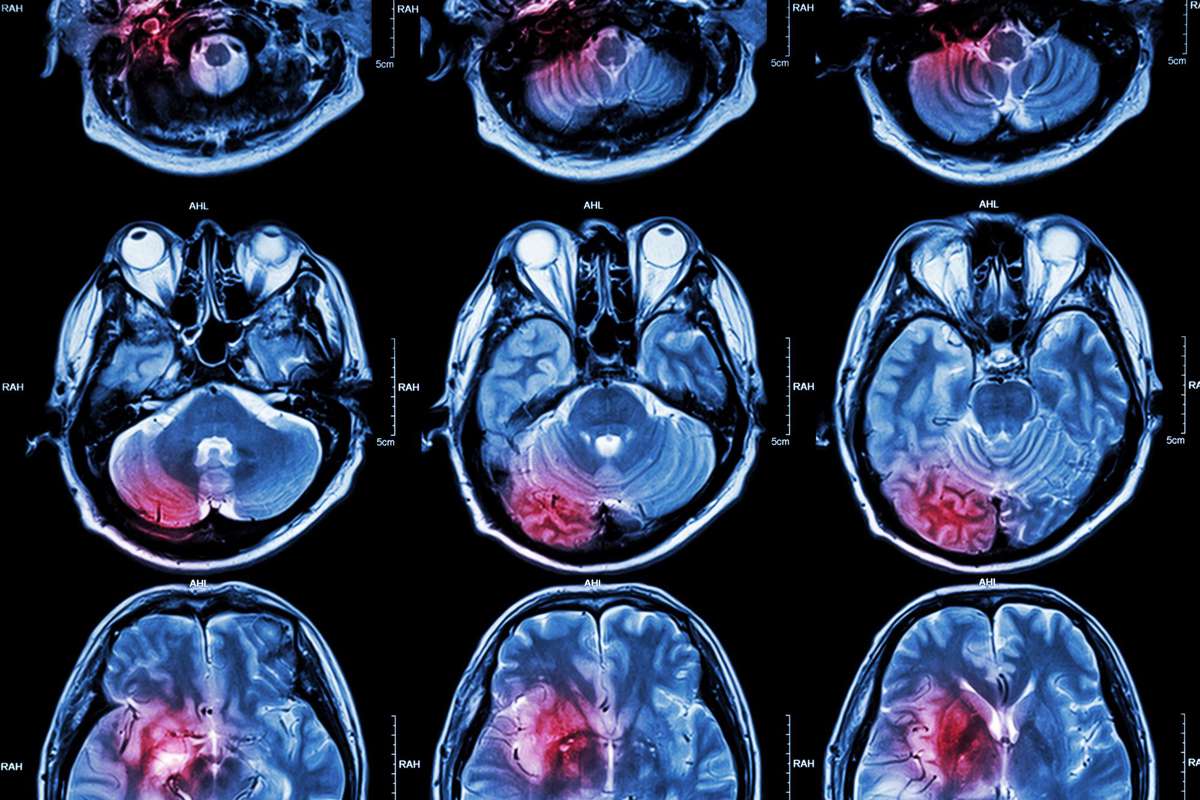Courtesy of Amanda Gardner
My husband suffered a massive stroke two years ago. Grady wasn't that old (59, at the time) and he was in pretty good health. He was a few pounds overweight, but he wasn't a smoker, nor did he have a family history that could help us make sense of what happened.
Luckily he survived (it was touch and go for a while there) and although he has some lingering symptoms, he continues to get better every day, even two years later.
For me, the incident shattered many of my perceptions about stroke, which strikes 800,000 Americans every year and kills 130,000. May is National Stroke Awareness Month: What better time to learn about the fourth leading cause of death in the U.S.?
Here are some major myths about stroke explained.
Only old people have strokes. False.
Although the majority of strokes occur in people over 65, fully one-third occur in patients under 65, like Grady. What’s more, the rate of strokes in young people is rising, a trend largely attributed to the continuing obesity epidemic. But strokes in young people can also be caused by an underlying abnormality–like a congenital defect in the heart–that no one knew about beforehand.
There’s only one kind of stroke. False.
There are actually two main types of stroke. About 85% of strokes are ischemic, the result of a blockage in one of the blood vessels supplying blood to the brain. The rest are hemorrhagic strokes, basically a brain bleed that occurs when a blood vessel breaks. The risk factors for each are similar, but treatments are vastly different. After having a hemorrhagic stroke, Grady said that it was like "someone spilled coffee in my brain."
There is nothing you can do to prevent a stroke. False.
Actually, about 80% of strokes are preventable by addressing major risk factors, namely weight, hypertension and high cholesterol, says Bradley White, MD, PhD, assistant professor of neuroscience and experimental therapeutics at the Texas A&M Health Science Center College of Medicine. "All three of those can be modified or treated successfully," he says. Exercising more, drinking less and controlling diabetes can also reduce the risk of stroke.
Stroke symptoms are always dramatic. False.
“Stroke symptoms can be as subtle as dizziness,” says Dr. White, who is also a neurosurgeon at the Texas Brain and Spine Institute in Bryan. Fortunately, though, most dizziness is due to standing up too quickly or something equally benign. More commonly, stroke manifests as droopiness on one side of the face, weakness on one side of the body and confusion and difficulty speaking. And guess what? Like heart attacks, men and women can have similar symptoms, but women can have other stroke symptoms–like hiccups–that are not as common in men.
Symptoms will go away if you just wait them out. False.
Thinking you can wait out or sleep off the symptoms is one of the biggest mistakes you can make. In fact, this kind of thinking and acting could kill you. “The important thing is not only recognizing the symptoms, but also not waiting around,” says Dr. White. “It’s better to get to the ER and feel like you were foolish then not respond and end up with a permanent deficit.” Nor should you ignore what’s known as a transient ischemic stroke (TIA) or “mini stroke.” TIA symptoms are like those of a stroke–problems with walking, trouble seeing in one or both eyes, dizziness, and numbness/weakness on one side of body–but they may resolve or go away after a relatively short period of time. Although the TIA itself may not result in major damage, it increases the odds of another stroke happening within 30 days. “We take TIAs very seriously,” Dr. White says.
If you don't recover quickly from a stroke, you are doomed to have a permanent disability. False.
Once upon a time, people believed that stroke survivors would stop improving after six months. Fortunately, this view has gone the way of the rotary phone. "You never stop healing and you never stop improving . . . because the brain is constantly rewiring,” says Dr. White. Grady was not expected to live yet continues to make significant improvements in both speech and motor skills at the two-year mark. It does take work, though. Luckily for me, Grady's "real world" therapy involves doing all the cooking. “There’s no question, it takes a very active program in order to recover,” says Dr. White.
If you don't get to the hospital in 3 hours there's not much doctors can do for you. False.
Ten years ago, experts felt that the "clot buster" drug known as tPA would only help people with ischemic stroke within three hours of the actual stroke. Now that time window has been expanded to as many as eight hours, depending on how the drug is delivered. However, says Dr. White, "it still rings true that the sooner you get there the better." tPA will not help with a hemorrhagic stroke and, in fact, it can worsen the bleed.
Read more:
- The Scary Truth About Strokes
- 17 Surprising Things That Affect Stroke Risk
- 8 Ways to Avoid Heart Attacks and Strokes If You Have Diabetes
